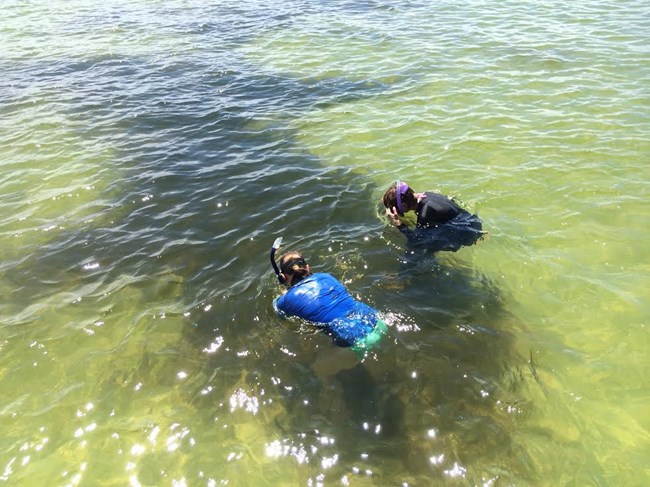
NPS/GULN
The network works with cooperators to record the current status of seagrass communities and track them for changes over time. While visiting each seagrass monitoring site, field crews also record variables that may affect the health of seagrass beds, such as salinity, depth, light, nutrient concentrations, dissolved oxygen, and temperature. The complete background, rationale and procedures for seagrass monitoring are described in a protocol narrative and several standard operating procedure (SOP) documents. The protocol is titled "Monitoring Seagrass in Parks of the Gulf Coast Network". It was published in the NPS Natural Resource Report Series in 2019, and it is available to the public through IRMA, following the links further below.
A summary of the vital sign and monitoring approach can also be found in the 2-page brief: Seagrass Monitoring Program Summary.
More information on our seagrass monitoring sites in Texas can be found on the website of our cooperators at the Texas Seagrass Monitoring Program.
Source: NPS DataStore Saved Search 3555. To search for additional information, visit the NPS DataStore.

Joe Meiman/NPS
Last updated: November 10, 2023
